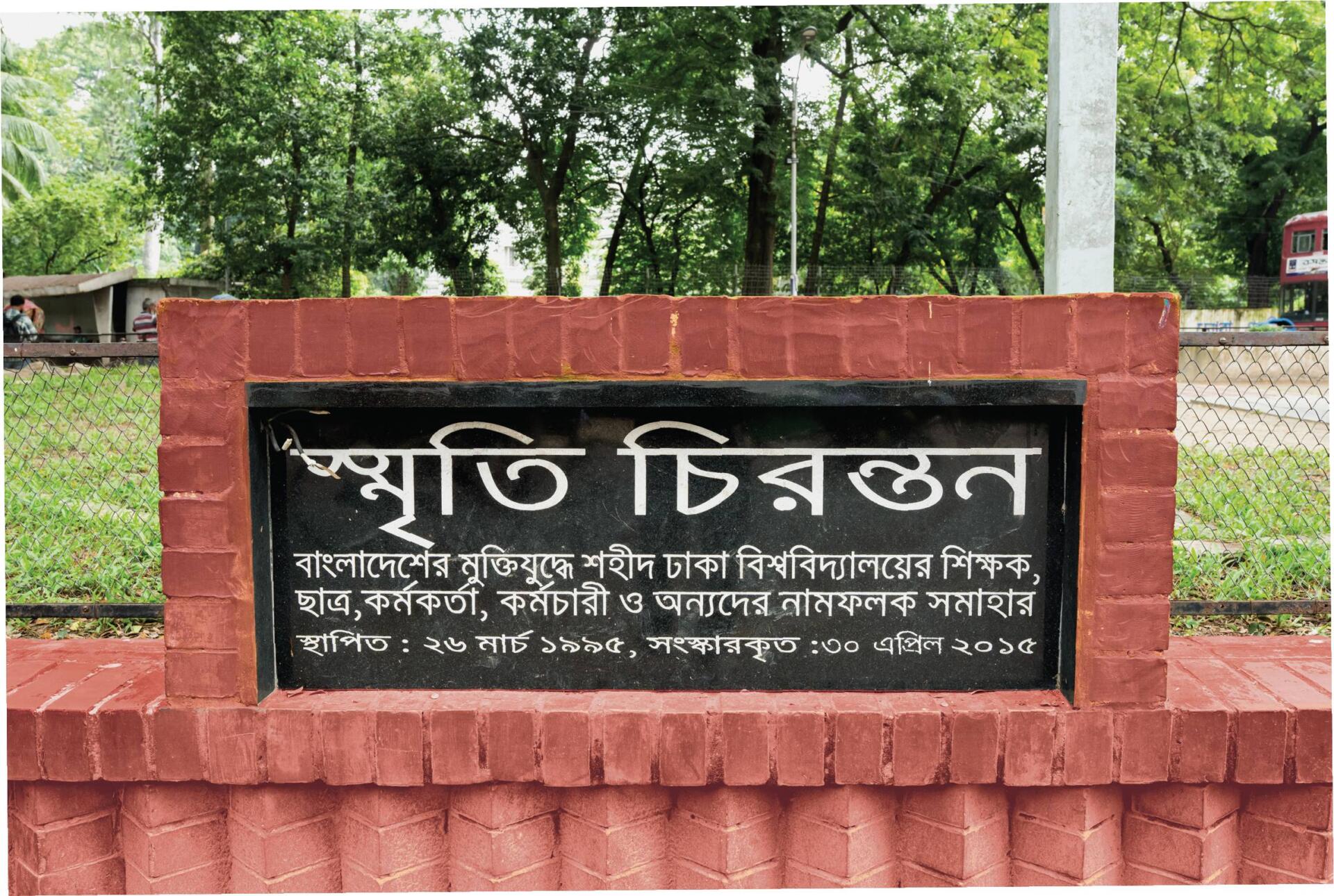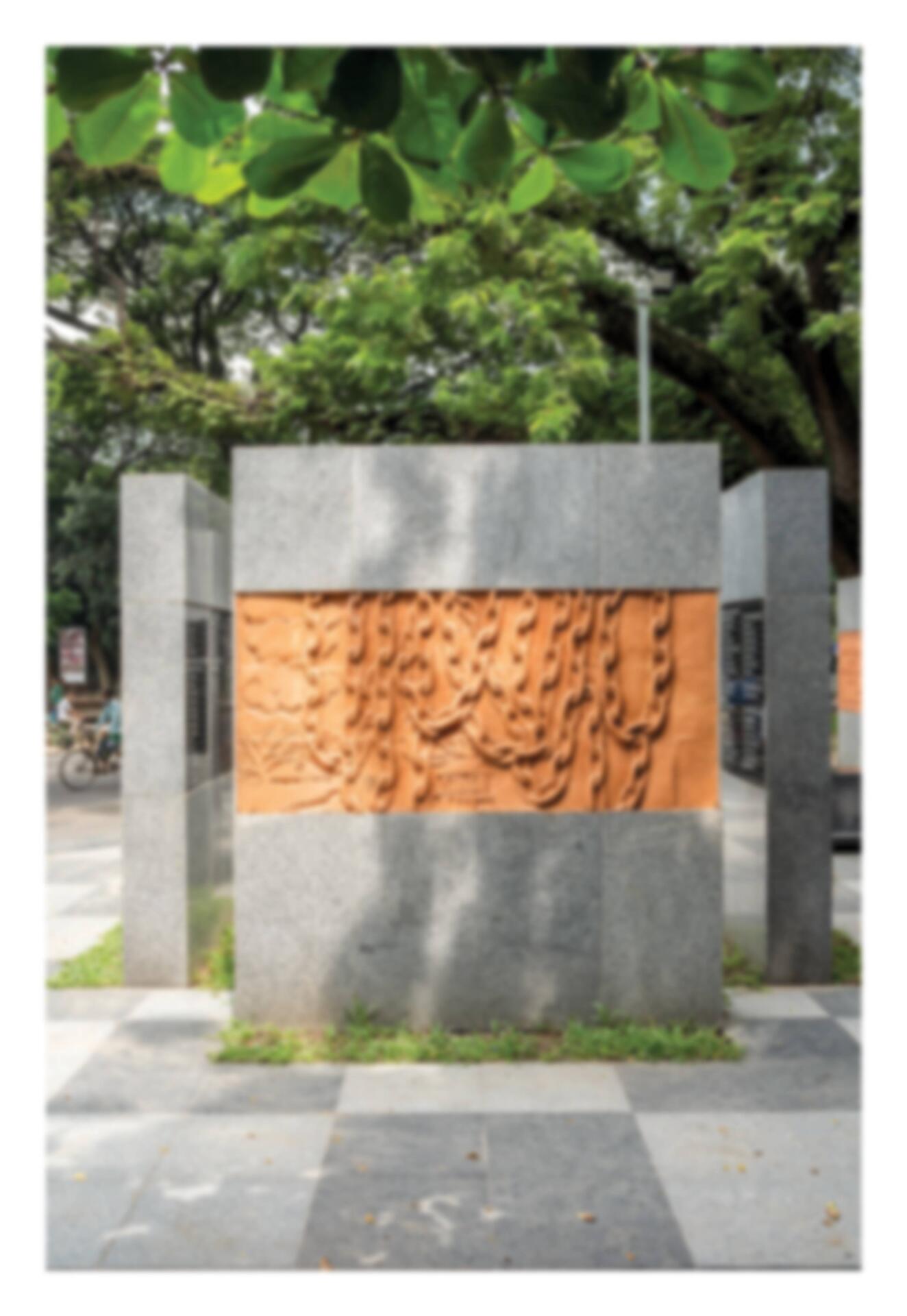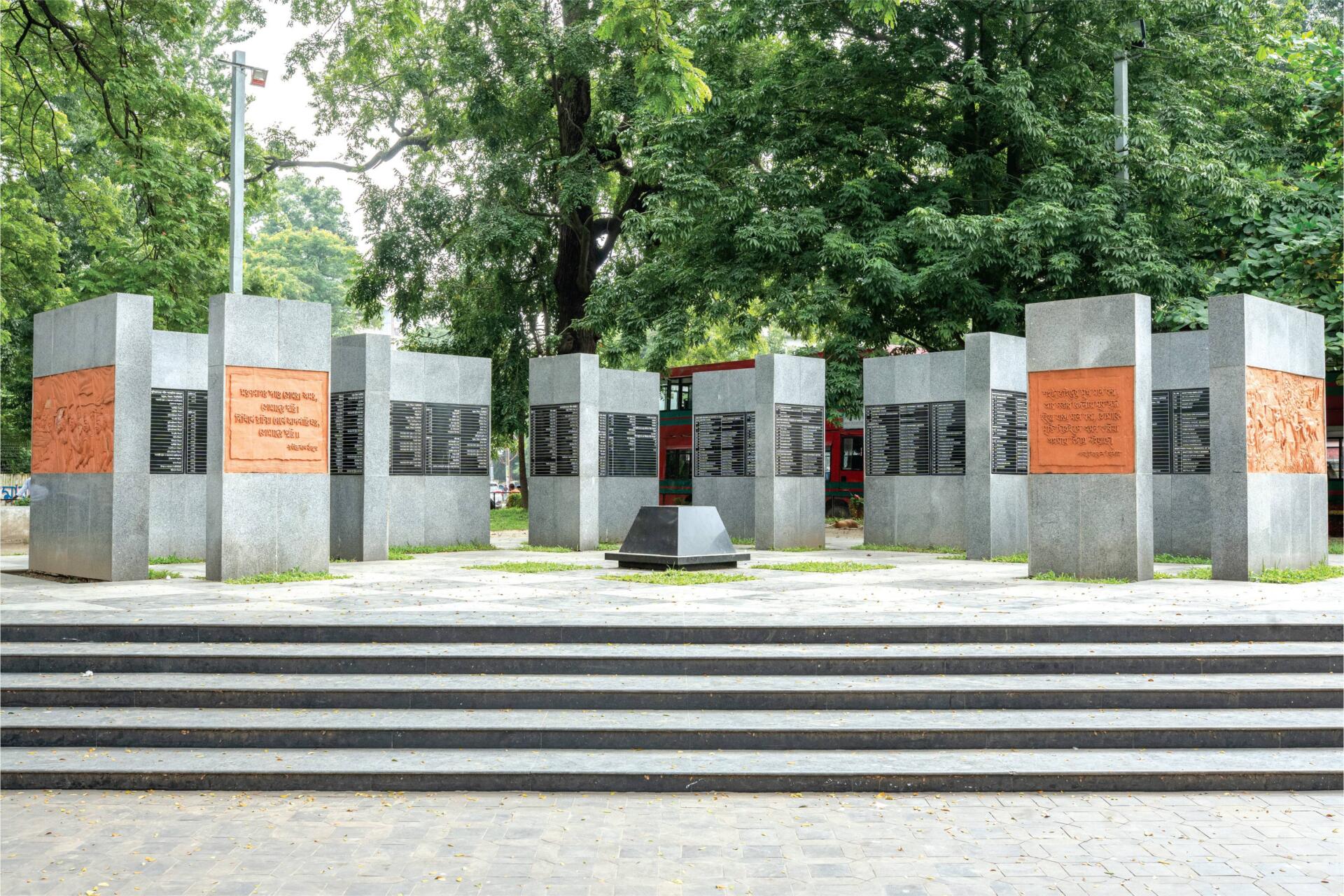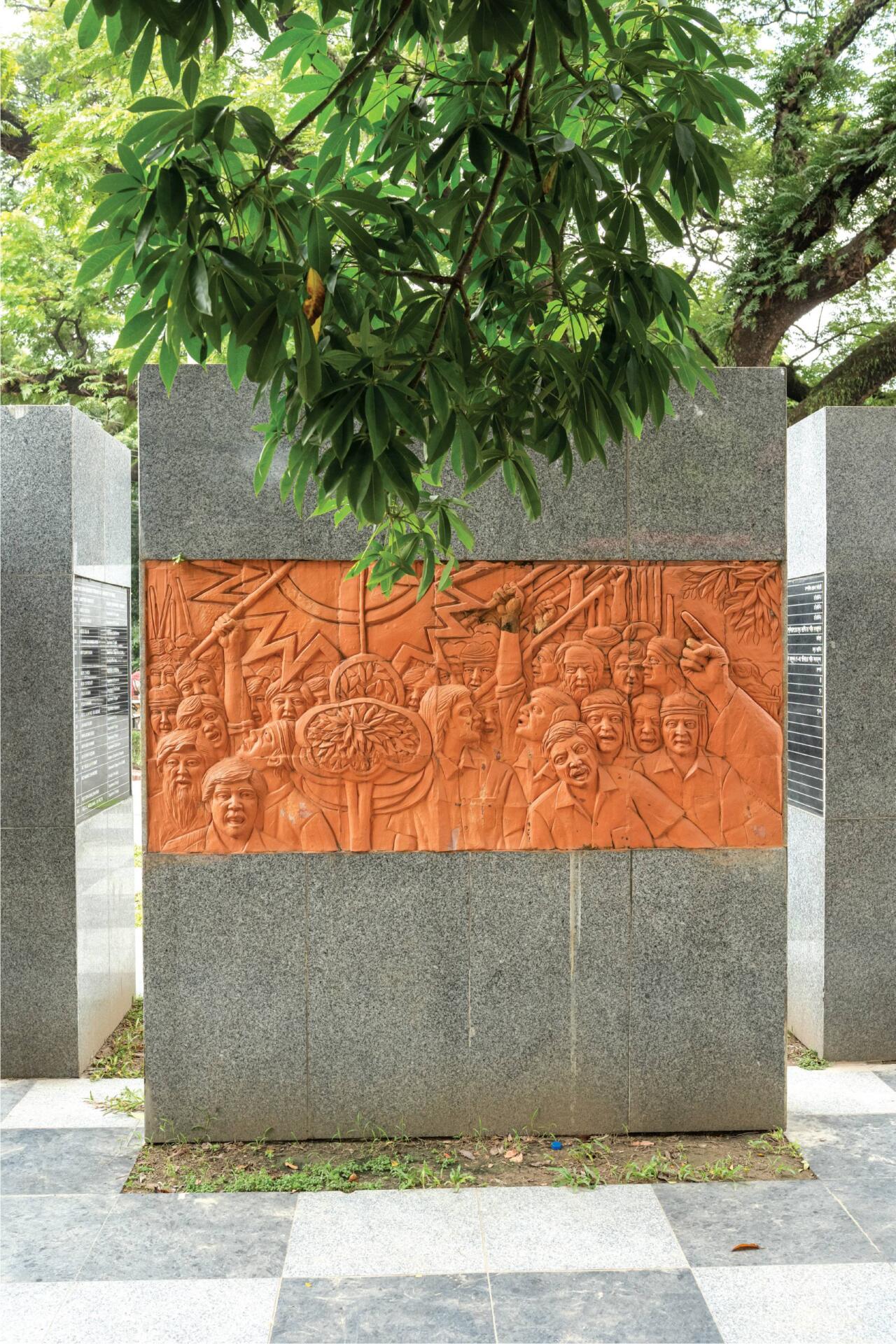
Military convoys were heard marching through the Dhaka University campus roads at night on 25 March 1971. Three heavily weaponised regiments – the 18th and the 32nd Punjab, and the 22nd Frontier Force– entered through the north, the south, and the east. A massacre was unfolding!

The ground pads of their tanks grinded with the asphalt as they entered, rifles cocking and loading. The attack was directed towards the intellectuals and the nationalists. Operation Searchlight, as it was infamously known to be, targeted the Dhaka University that night. The whole night swept across like a blood-stained hurricane, dark and gore. Intellects and teachers such as Professor Anwar Pasha, Professor Gobindo Chandra Dev, and Professor Jyotirmoy Ghuha Thakurta were, among others, lost. At around 12’o clock, Jahurul Haq Hall and Jagannath Hall were attacked with mortars and continuous firing, as many as 34 more were killed. The martyrs included the staffs of the university. On that dreadful night, Bangabandhu Sheikh Mujibur Rahman was arrested. Next day, Major Ziaur Rahman proclaimed independence of Bangladesh from Chittagong on behalf of Bangabandhu. And on 10 April, a provisional government was formed in Baidyanathtala of Meherpur. Bangladesh fought back and eventually came out victorious. After massacres and a nationwide uprising, about 93,000 Pakistani troops surrendered to the joint forces on 16 December 1971.
The Memory Eternal
The University of Dhaka was the heart of the rebellion that contributed to the birth of the nation-state. The students remember passingby, and almost every time, being driven by compassion to lay their inquisitive eyes on the canopied patch of elevated platform that held the memorial.

Names of the teachers, students, and staff of Dhaka University who were martyred on the 25 March, were memorialised in 1995 first, on what is known as The Memory Eternal. Located infront the Dhaka University Vice Chancellor’s Bungalow and at one end of Fuller Road, the Memory Eternal consists of rectangular concrete slabs and terracotta designs with poems and clay murals. As one closes in on the site from any direction, a raintree is noticed, branches of which mothers the entire area. The tree holds within itself, the memories of the fearful night, never forgotten. It has seen red and felt tremorson that night, and the very roots have absorbed from the soil, the blood of the martyrs.

Under the tree stands the concrete slabs. A few steps up stairs, and you will come across the first poem that warms the heart-words of Tagore himself, speaking of the souls that are immortalised. Another slab carries the words of the national poet Kazi Nazrul Islam and speaks of their sacrifice. The rebel poet calls upon everyone to remember them.

The other slabs carried the names of 194 martyrs of Dhaka University on 25 March, on a black plaque written in white ink. On the back are terracotta murals, portraying the olden lives of the evergreen villages, the red and green flag under attack by the meager tyrants, and figurative chains binding the oppressed citizens of East Pakistan.
The Memory Eternal or “Sriti Chirantan” was recognised as Dhaka University memorial initially, and in 2015, it was renamed as the “Memory Eternal.” The designers were Abdul Mohaimen and Mashiuddin Shaker. Around the Memory Eternal, there are mostly students, chatting and sipping on tea from a cup under the shade of the raintree. As the sun sets, the darkness is chased away by lights pointed at the memorial, and that is another site to be hold.




